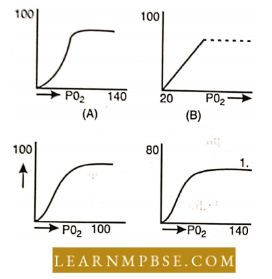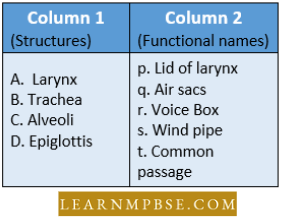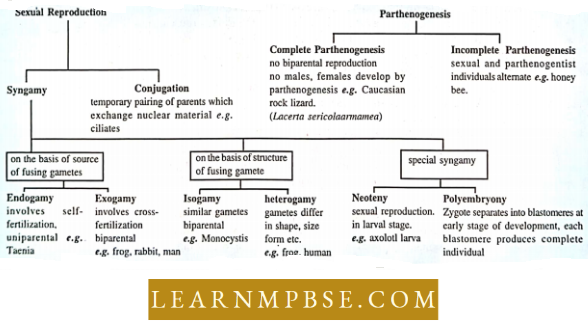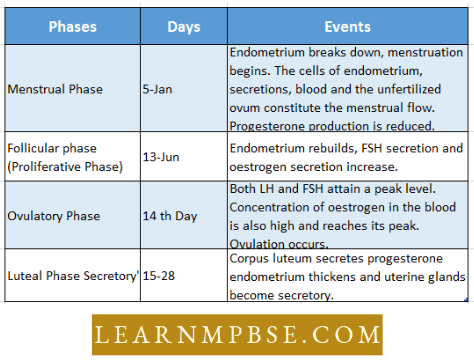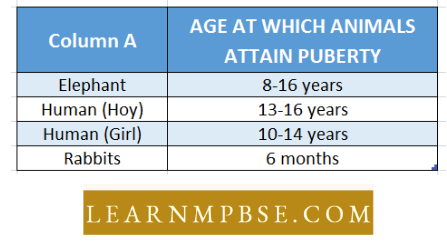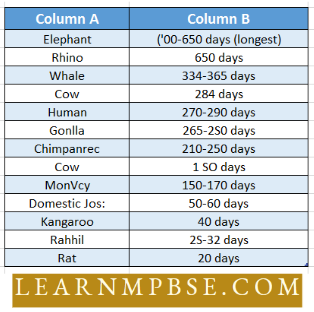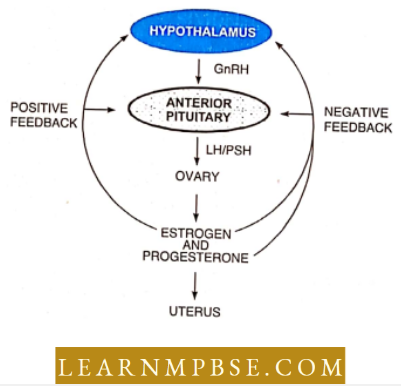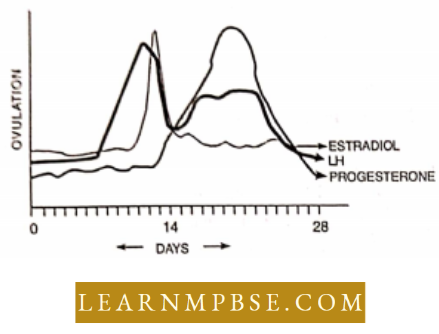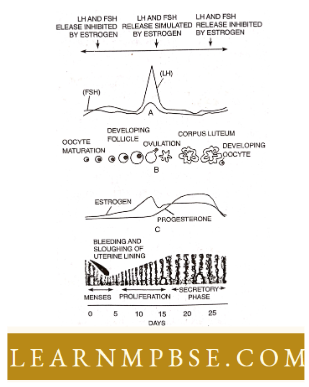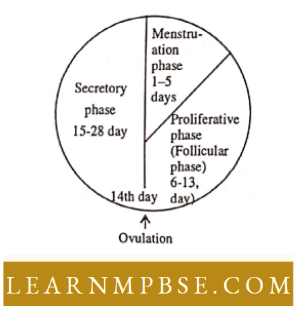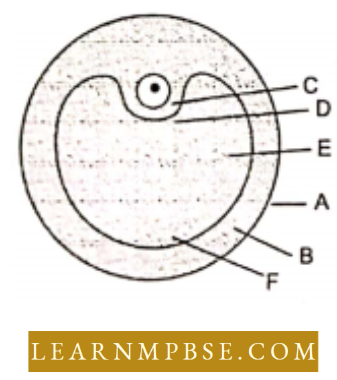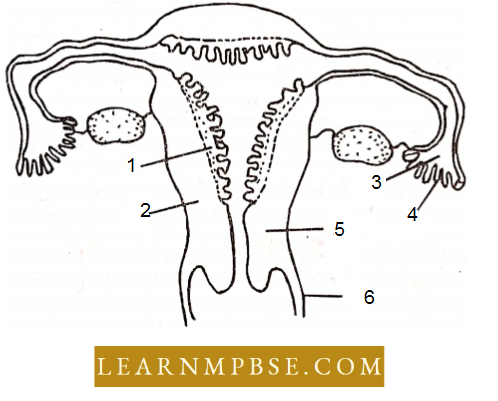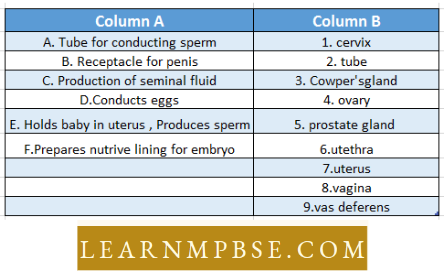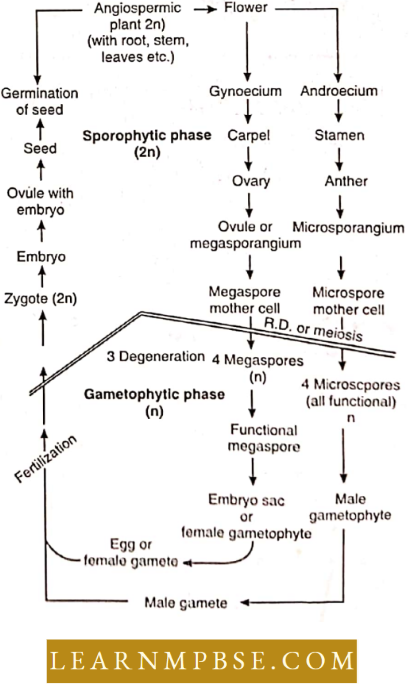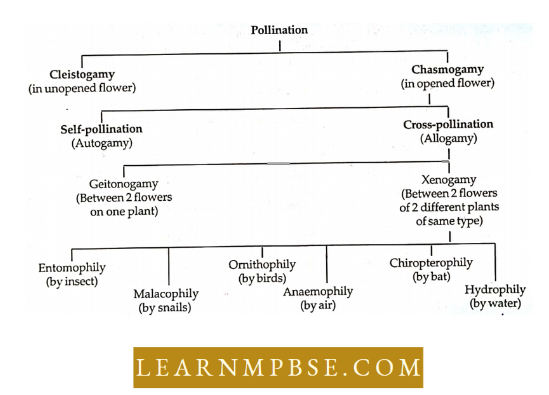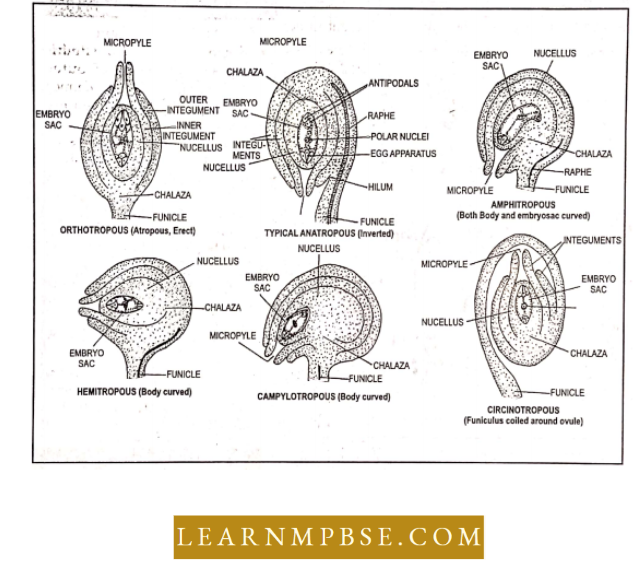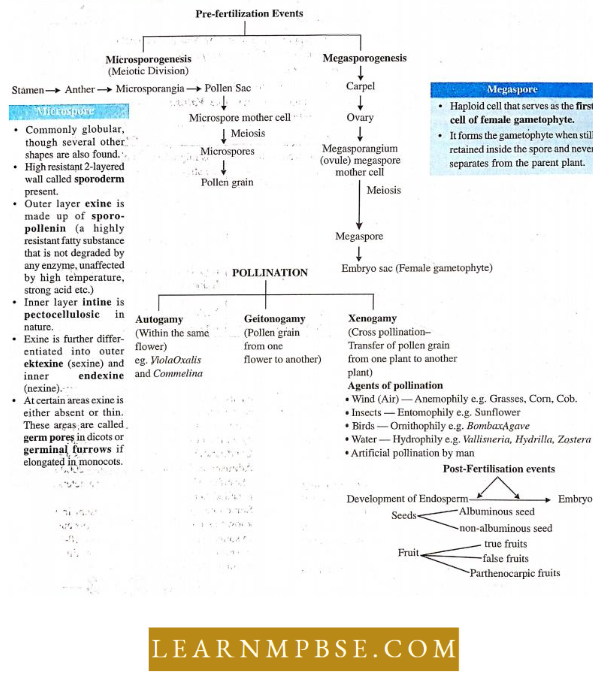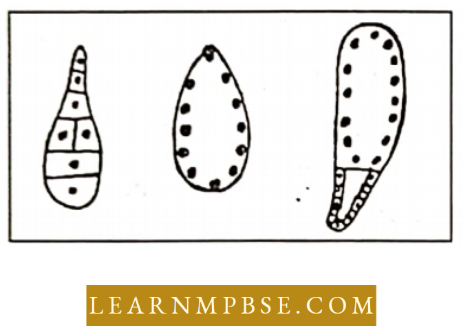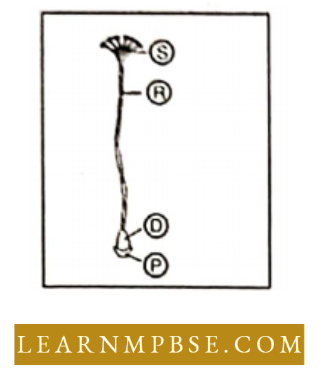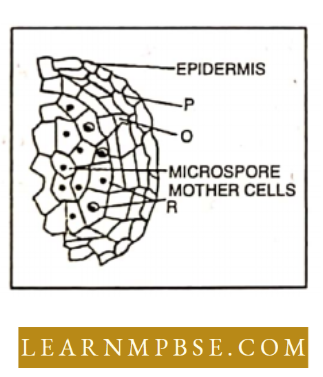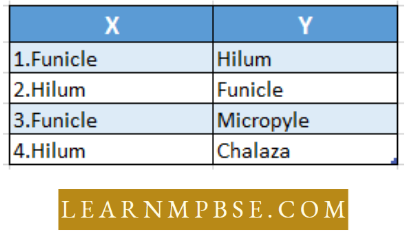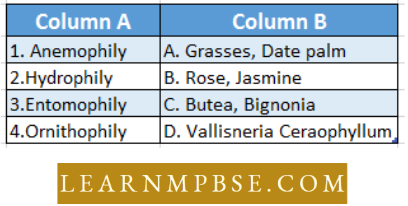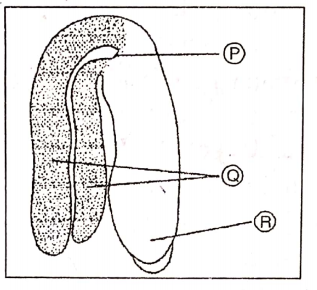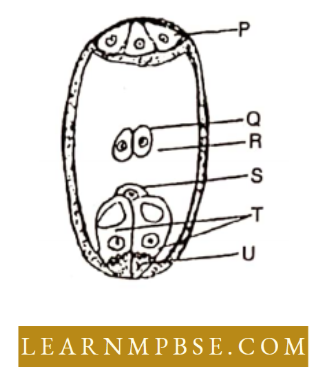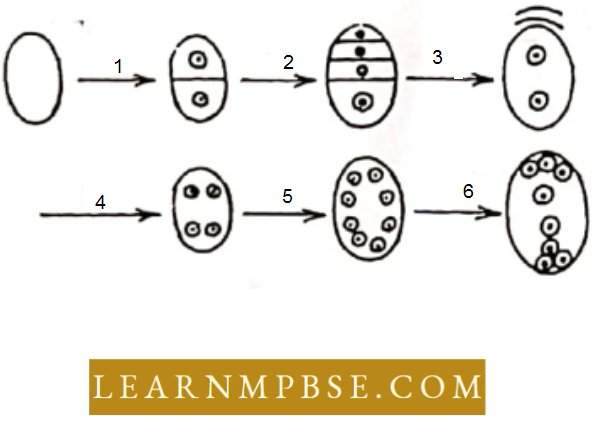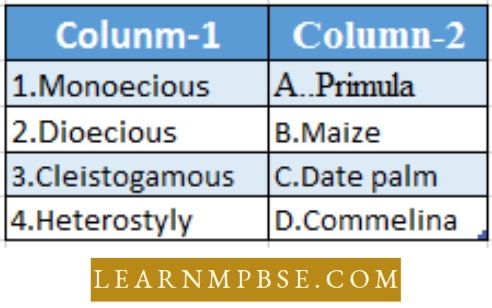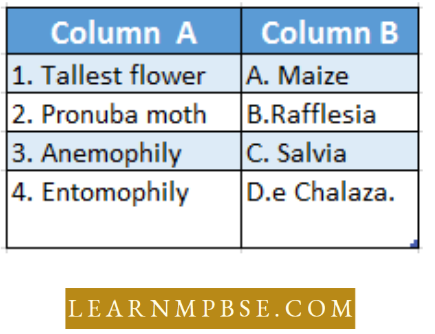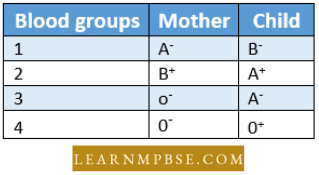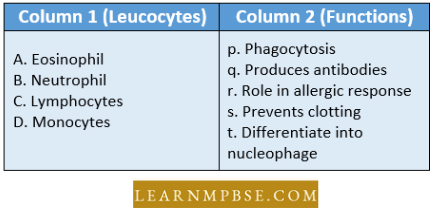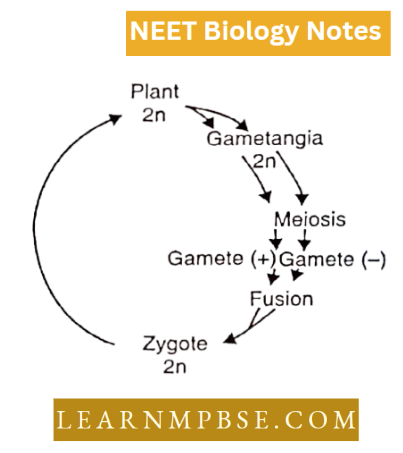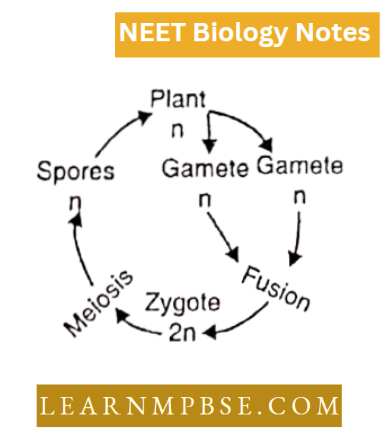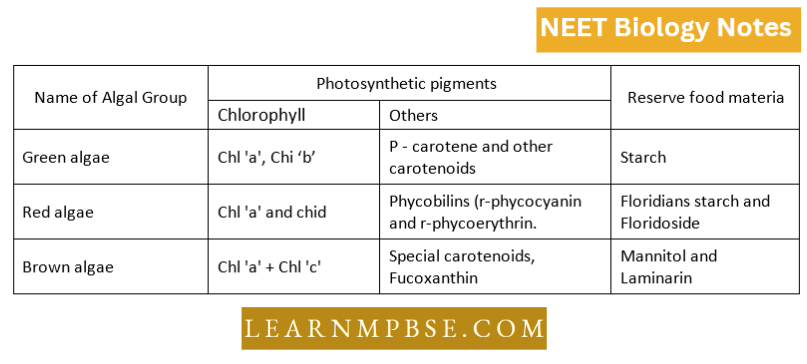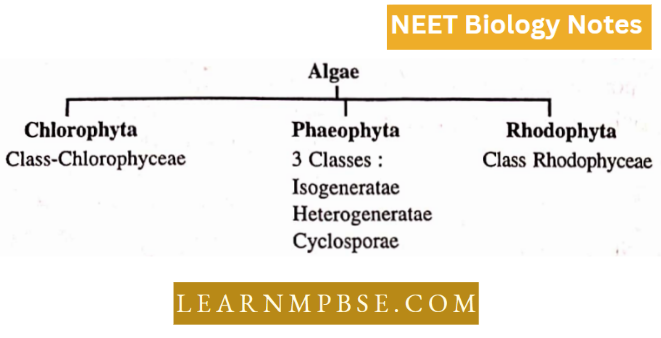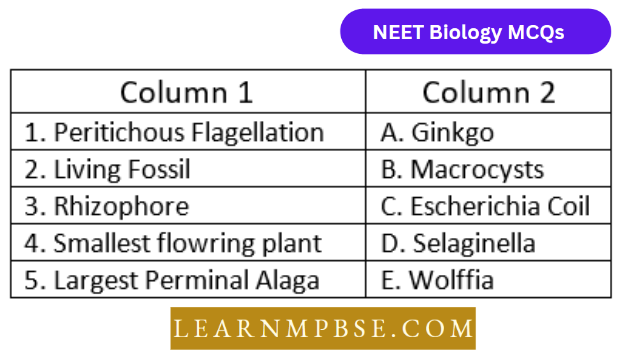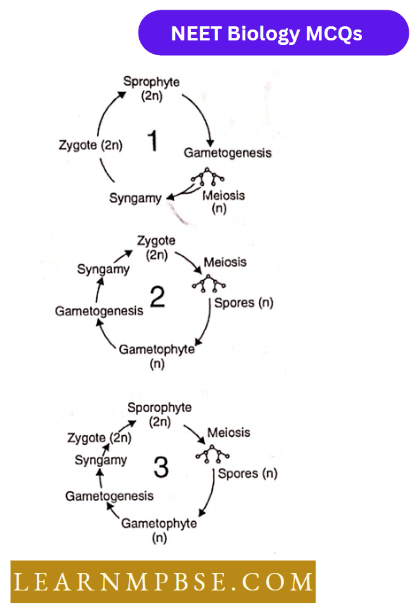NEET Biology Blood Circulatory System Circulation Of Fluids
Types of circulation. The circulatory system is the transport system of the body and circulating fluid transports nutrients, respiratory gases, metabolic intermediates and hormones, (informational molecules) to all parts of the body.
- It maintains homoeostasis, uniformity of heat etc. all over the body.
- It acts as the centre for the defence system.
- It carries metabolic intermediates For Example lactic acid (muscle to liver), and information molecules (hormones).
- The circulating fluid also distributes water, H+, chemicals and heat uniformly all over the body parts.
- Circulation may be intracellular or extracellular
- Intracellular circulation takes place inside the cell For Example In Amoeba and Paramecium it is called cytoplasmic movement and cyclosis respectively.
- Extracellular circulation takes place outside the cell.
- Extraorganismic circulation is also called water circulation For Example Leucosolenia (sponge), Hydra etc.
A gastrovascular cavity in acoelomate aquatic invertebrates performs the function of an internal circulatory system.
Read and Learn More NEET Biology Notes
- Coelomate invertebrates do have a circulatory system, which may be closed or open type.
- Intraorganismic circulation. In this, body fluids circulate in the body For Example blood and lymph.
- Blood vascular system. In this case, the circulating fluid is blood.
Components of the blood vascular system
- Blood
- The heart
- The blood vessels
Blood Circulatory System In Animals NEET Notes
Lymphatic system. In this case, the circulating fluid is lymph.
- Parenchymal circulation takes place in Platyhelminthes in special tissue-the parenchyma.
- Body cavity circulation takes place in the body cavity, a watery fluid, called hydro-lymph, without a respiratory pigment as in Nematodes, ectoprocts and rotifers.
- Closed type of circulatory system. Blood flows in closed vessels and the heart For Example, vertebrates as in man.
- Blood vessels form a complete circuit in the body, carrying blood to and from the organs. Free haemo coelomic spaces outside the system are generally reduced or absent altogether.
- Open type of circulatory system. Blood does not flow in closed vessels but is present in the body cavity For Example, arthropods and molluscs have an open type of circulatory system.
In the open type, the blood is pumped by the heart into blood vessels that open into blood sinuses (spaces). There is no capillary system.
The circulatory system of cockroach. It is open type. It consists of 13 chambered heart t modified dorsal blood vessel), colourless blood, and haemolymph, comprising plasma and white corpuscles termed haemocytes Haemocoel is divided into three sinuses
- Pericardial sinus (Dorsal sinus)
- Periviscreal sinus
- perineural Sinus
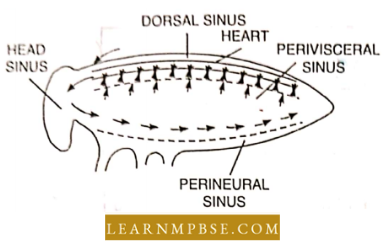
The flow of blood is kept in constant flow by contraction of alary muscles.
NEET Biology Blood Circulatory System Blood
Haematology. Study of the formation, composition, function and diseases of the blood.
- Blood. Blood is a fluid (mesodermal origin) connective tissue. Blood is a transporting material of the body and transports 02, salts, vitamins, hormones, food substances etc.
- To all parts and cells of the body and collects metabolic wastes (CO2, and NH3) from them and passes them to the lung and kidneys respectively for giving out. The blood contains 45% corpuscles (formed elements) and 55% plasma (fluid).
Corpuscles. (R.B.C., W.B.C. and platelets)
R.B.C. Their number is about 5.5 million per mm3 in males and about 4.8 million per mm- in females, which can be counted by haemocytometer. Each R.B.C. is biconcave, devoid of nucleus, mitochondria and centriole in mammals (except in camel and sloth where it is nucleated).
- The cell metabolism is maintained by 2-3 diphosphoglycerol (DPG), which is three times more in R.B.C. Each R.B.C. is 7- 8 pm in diameter, 3|im in width, with an average volume of 87 pm3 and can carry 109 mols of 0-> with it from lung to tissue.
- The colour of R.B.C. is due to respiratory pigment—haemoglobin (Fe-base), present in most of the vertebrates; Haemocyanin (Cu-base) – blue, present in Mollusca and Crustacea; Haemoerythrin (Fe-base) – Red, dissolved in plasma, present in siphunculus and branchiopods and Chlorocrurin (Fe-base) green dissolved in plasma present in polychaetes.
- The erythrocytic sedimentation rate (E.S.R.) in man is 6-10 gm/100 ml of blood in the first hour (during infection and disease the R.B.C. become lighter and E.S.R. is decreased). E.S.R is determined by Wintrobe’s tube and also by the Western blotting method.
- R.B.C. is 60% water and 40% solid. Its percentage in the following is as – haemoglobin— 29. phospholipids—4, cholesterol—19, fats—07, glucose —06, non-protein nitrogen—044; Urea —11 and inorganic salts 0-7 to 1%.
- Haemoglobin. It consists of 1 molecule of heme (iron porphyrin) and 4 molecules of globulin (protein). The average haemoglobin percentage in males is 16 gms and in females 14 gm/100 ml of blood (at birth it is 23 gm/100 ml of blood). The percentage of haemoglobin decreases during illness or in loss of blood and causes anaemia in animals.
- W.B.C. White blood corpuscles are nucleated and show diapedesis (amoeboid movements and can pass through capillaries into lymphatic spaces as wandering cells). W.B.C. number varies from 5000 to 9000/Cubic nun.
- In stress, strain, infection and disease, their number is increased as they do phagocytosis and work as organs of offence and defence besides helping in healing the wounds. They are of two types :
- Agranulocytes. 20-25%, without azurophilic granules (lymphocyte, 6-lOj.tm in diameter, monocytes- 3-8%, 9- 12(im in diameter) Monocytes are largest W.B.C., kidney-shaped excentric nucleus.
- Granuloolev 75-80%. the nucleus is longitudinal (two or more lobes). They are of llwee i\pcs Kosinophils 4%). bilobed nucleus, sentinel by acidic dyes and spherical in shape Rasophils tO.5-2%) S-shaped nucleus, stained in basic dyes.
- Neutrophils (60-70%). nucleus, show amoeboid movement highest, in number and physiologically not important. stained by natural dyes.
- Plasma. It contains 90% water and 10% other substances like :
- Proteins. 5.5 to 7.6*7- (albumin 3.3 to 5.6%. globulin — 1.6 to 3.4%, fibrinogen is about 2 to .4%).
- Organic Constituents. 1-2% non-nitrogenous fat, carbohydrates lipids and nitrogenous urea, uric acid, creatinine, ammonia, amino acids, and xanthine.
- Inorganic Constituents. Chlorides, bicarbonates, sulphates and phosphates of K, Na. Ca. Mg and Fe.
- Enzymes. Lipase, amylases, protease, esterase, nuclease and oxidase etc.
- Hormones. Thyroxine, insulin, pituitrin, adrenaline, estrogen androgen etc.
- Gases. 02, CO2,. N2,
The plasma is the transport medium of blood, even some 02 is also transported by it.
Blood Circulatory System In Animals NEET Notes
Blood platelets
- Number. The platelets are fewer than the red corpuscles and more than the white corpuscles in number. There are about 250,000 platelets in a cubic millimetre of blood. An increase and decrease in the number of platelets are known as thrombocytosis and thrombocytopenia respectively.
- Structure. The platelets are flat, non-nucleated fragments of large cells in the bone marrow, rather than true cells. They. are bounded by a membrane and contain a few organelles and secretory granules in the cytoplasm.
- They have at the centre a group of basophilic granules, which give the appearance of a nucleus. At the site of injury, the platelets release platelet factor or thromboplastin that helps in blood clotting.
- Formation. The platelets are formed in the red bone marrow. Their formation is known as thrombopoiesis.
- Life Span and Disposal. The platelets survive for 3 – 7 days only. They are disposed of by phagocytosis in the blood itself.
- Spindle Cells or Thrombocytes. These are biconvex, nucleated cells with granular cytoplasm. They are found in vertebrates other than mammals. The spindle cells aid in the clotting of blood like the platelets of mammals.
NEET Biology Blood Circulatory System Coagulation Of Blood
Soluble blood protein fibrinogen (dissolved in plasma) is changed into fibrous protein. Fibrin entangles the platelets and corpuscles and the blood clots. This clotting involves various factors :
- The place of injury produces thromboplastin. Under the influence of thrombokinase, the phospholipid is given by rupturing platelets, Ca + + ions, and antihero-philic factor.
- Prothrombin and heparin. Produced by the liver are present in blood. Heparin acts as an anticoagulant. Under the influence of thromboplastin, the prothrombin is broken into thrombin and heparin.
- Thrombin in the presence of Ca ++ ions acts on fibrinogen (a soluble protein present in the blood) and converts into fibrous protein fibrin. Fibrin makes a mesh of delicate fibres and platelets entangle them to form a clot.
- Blood stored in the blood bank is added with oxalate, and carbonate, which precipitate v/ith Ca and blood does not coagulate due to suppression or removal of calcium salts.
Factos in coagulation are numbered up to 13.1 — Fibrinogen; II — Prothrombin, Vit K; III — Thromboplastin; IV — Calcium ions, V — Proaccolerin; VI — denied; VII — Proconvertin; VIII — Anti-haemophilic globulin (AHG) IX — Christmas factor (platelets factor II), X — Stuart factor, XI — Plasmo thromboplast Antecedent (PTA) XII — Hegeman’s factor (contact factor), XIII — Fibrin stabilizing factor (FSH factor).
- If blood does not clot, it is called bleeder’s disease ‘haemophilia’.
NEET Biology Blood Circulatory System Theories of Blood Coagulation
- Best and Taylor’s theory. According, to this theory prothrombin is essential for clotting.
- Howell theory. Ca2 + ions play an important role in clotting
- Fuel and Spiro theory. Thrombokinuse is important for clotting.
- Cascade theory by Macferlanc (Most recent)
- According to Cascade’s theory, there are ID factors presently in blood dolling.
- Best and Taylor gave 4 factors of blood clotting
- Howell worked upon Limulus.
Encephalic Thrombus – Formation of Thrombus in blood vessels of the brain
- The mammalian circulation route is a closed-type circuit consisting of two main subsystems:
- Pulmonary circulation constitutes 16% of total blood (7% in the heart and 9% in pulmonary vessels.)
- The route of blood is – Right Auricle→Right ventricle → Pulmonary aorta→ Lungs Pulmonary vein →Left auricle.
Systemic Circulation consists of 84% of total blood (64% in veins, 15% in arteries and 5% in capillaries and the route of blood are:
- Left auricle→ Left ventricle→Systemic aorta → Organs or tissues → Veins→ Right auricle.
- Systemic veins are called blood reservoirs.
- Other sub-systems are also considered as part of systemic circulation. These are :
Cerebral circulation. The brain gets blood through four (two external and two internal) carotid arteries, but at the base of the brain these fuse to form a circle of Willis, from which arteries branch off to supply the brain.
Blood Circulatory System In Animals NEET Notes
Hepatic circulation. The liver receives blood from two sources, the hepatic portal vein and the hepatic artery and the mixed blood leaves through the hepatic vein.
- Blood also remains stored in blood sinuses within the liver.
Coronary circulation. Supply of blood to the heart muscle itself and left coronary arteries arise from the base of the systemic aorta and supply to respective parts of the heart.
Blood vascular system. It is a closed type and consists of a triangular muscular pumping organ heart, tube-like blood vessels (arteries, veins and capillaries) and transporting medium blood which acts as carriers.
NEET Biology Blood Circulatory System Types of Hearts based on Morphology
Pulsating hearts. Simple blood vessels with a relatively heavy muscular wall, which contract in peristaltic waves For Example Annelids, and Amphioxus.
- Tubular hearts. A pulsating vessel is highly developed and present in the pericardial cavity or sinus For Example Arthropods, some tunicates.
- Ampullar accessory hearts. These are booster pumps which provide sufficient driving force to pump blood through some peripheral regions of circulation For Example Crustacean, insects and some cephalopods.
- Chambered hearts. The heart is thick-walled, muscular and chambered vertebrates, molluscs.
NEET Biology Blood Circulatory System Heart
It is a hollow, muscular pumping organ formed of cardiac muscle fibres and beats spontaneously and rhythmically throughout life. It is enclosed in a double-walled pericardium. It is a three-layered
- Endocardium
- Myocardium
- Pericardium (Heart lies in it ). The heart is four-chambered with left and right auricles and ventricles. The walls of the ventricle are thicker than the auricle. The wall of the left ventricle is 3-6 times more thicker than the right ventricle.
Cardiac valve. Prevents the backflow of blood.
- Bicuspid or Mitral valve in between left auricle and left ventricle and tricuspid valve in between right auricle and right ventricle (Bicuspid made two membranous cusps and tricuspid with three cusps.)
- The tricuspid valve is a distinguishing characteristic of the mammalian heart. (In lower chordates the valves are muscular Jtujt in mammals they become membranous.)
- The lower border of valves is provided, with many slender but strong Chordae tendineae which at their other ends are connected either directly to the walls of ventricles and interventricular septum or to papillary muscles of the ventricle.
- A modified blood vessel, made of cardiac muscles (= myogenic) for pumping blood, mesodermal in origin.
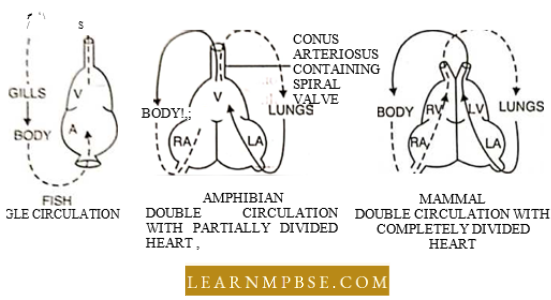
- In early forms (fishes) it is like a straight tube with tandem chambers :
- sinus venosus → auricle →ventricle → truncus arteriosus.
- Auricles and ventricles are true chambers the other two are auxiliary chambers.
- In fishes, it is two-chambered (1 auricle + 1 ventricle) and. called a ‘venous heart’ since only venous blood flows through it.
From Amphibians to mammals it is first like muscular structure with auricle (thin-walled) and ventricle (thick-walled) as main chambers.
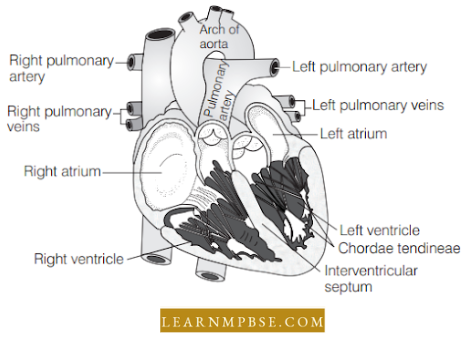
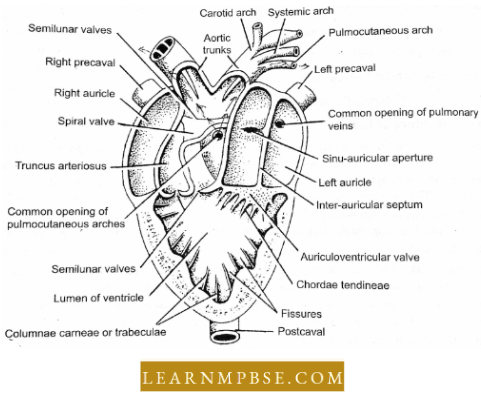
- The anterior broader end (auricle) is the base and the narrow posterior end (ventricle) is the apex.
- A distinct line of depression between the mile and ventricle is economy selects,
- Enclosed within two layers of pericardium. It is situated in the mediastinal space of the thorax.
- Histologically the outer layer is the epicardium followed by a thick muscular myocardium and lining of the endocardium.
The blood supply of the tissue is made by coronary circulation.
Blood Circulatory System In Animals NEET Notes
NEET Biology Blood Circulatory System Opening And Valves Of Heart
- The tricuspid valve is present in the right auriculoventricular aperture.
- A bicuspid valve is present in the left auriculoventricular aperture.)’
- Semilunar valves are present between ventricles and aortic arches.
- The valve of Thebesius guards the opening of coronary sinus v;
- Haversian valve is present on the end of the opening of precavals.
Eustachius valve: present on the opening of the postcard.
Foramen of Pcnizee: It is the aperture that connects two ventricle
Foramen of Ovale: The aperture present between two auricles in the embryonal stage.
Fossa ovalis: It is the depression in the interauricular septum of the heart of an adult.
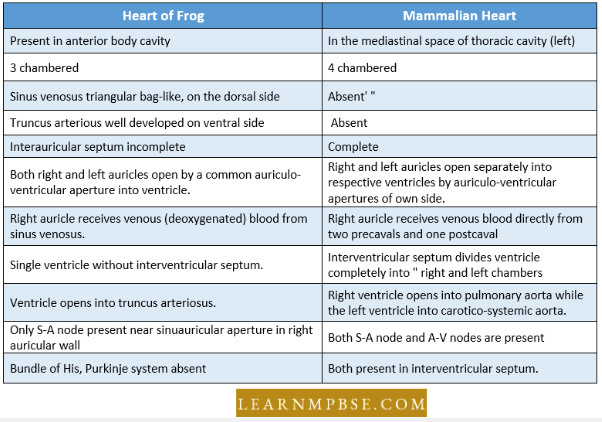
NEET Biology Blood Circulatory System Heart Beat
The rate of heart beat in man varies from 50 to 100 i.e. ± 72 beats per minute. The rate of females’ heartbeat is faster than that of males.
- It is the number of heartbeats per minute (72 in a man);
- Directly proportional to temperature and physical activity; becomes double with the rise of every 10°C but, ceases at 44°C.
- Ca++ accelerates the heart rate while Na+ and K+ make it slow.
- Increases also due to emotions, feelings, love, fear, pain anger, etc.
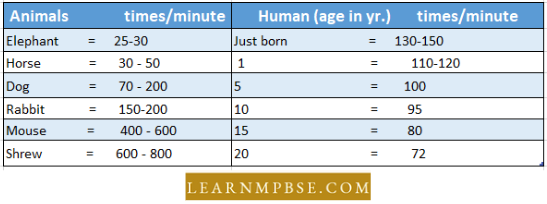
It is inversely proportional to the body weight of animals, as shown in the box.
NEET Biology Blood Circulatory System Cardiac Cycle
- Arterial systole – 0.1 sec. arterial diastole 0.762 see to 0.862 see. Ventricular systole 0.379 sec: Ventricular diastole- 0.483 sec to 0.862 sec. Auriculo-ventricular interval 15 seconds.
- Factors influencing heartbeat. Size of body, age, physical Fitness etc., lower the rate, heart beat, whereas muscular work, temperature, eating, bath, high altitude etc. increases the heart beats 100-150 beats/sec.
- Heartbeats can be recorded on a kymograph, the process is called kymography. Besides, sympathetic nerves accelerate the metabolic rate i.e. the heartbeat, respiration etc. while the parasympathetic nerves do the opposite work, hence’ they protect the heart.
- lung and other vital organs from overwork and excessive response to stimuli. Transmission of heartbeat. Heart is connected with the central nervous system by two nerves (1) Vagus (autonomic) (2) Cervical (sympathetic) Heart’s action is automatic (.involuntary), i-e. it does not depend on outside impulses.
- Its impulse node lies within the heart, such a heart is known as a myogenic heart. It is also controlled by the nervous system, therefore it is neurogenic also. The hearts of amphibia, reptilia, aves and mammals are myogenic.
- In frogs – the sinus venosus beats first and passes inner stimulus to the auricle, which passes it to the ventricle which contracts. Contraction of the sinus venous is followed by the contraction of auricles and the ventricle undergoes diastole.
- Pace-maker or S A Node (Sinu-auricular node) lies in the wall of the right atrium (auricle) near the opening of the right precaval. In mammals, cardiac impulse originates in the SA Node, This is the first structure of the heart which becomes electrically negative.
- The impulse originated from here contracts both the auricles and causes a systole sound and systolic pressure i.e., 120 mm of Hg. From this node, the impulse is carried to the AV Node, which lies at the inter-auricular septum.
- The AV Node gives rise to a bundle of nerve fibres called the Bundle of this. The fibres bifurcate at the extremity of the ventricle and form the Purkinje fibres, which spread in both the ventricles. The AV Node causes contraction of the ventricle and a diastolic sound and diastolic pressure i.e. 80 mm of Hg.
- The SA Node and AV Node produce the impulses at the difference of 10-15 seconds, which is called the rest period. A healthy person’s heart has 75 beats per minute and pumps 5 litres of blood per minute. A 50-year-old man’s heart on average beats about 2 billion times and pumps about 13 crore litres (1 lakh 30 thousand tons).
- Nerve Supply to the Heart. In addition to the intrinsic stimulation of the myocardium described above, the heart is influenced by nerves originating in the cardiac centre in the medulla oblongata which reach the autonomic nervous system. These are the parasympathetic and sympathetic nerves and they are antagonistic to one another.
- The vagus nerves (parasympathetic) try to slow the rate at which impulses are produced by the sinoatrial node, therefore decreasing the rate and force of the heartbeat.
The sympathetic nerves tend to speed up the rate of impulse production by the sinuatrial node, thus increasing the rate and force of the heartbeat.
- The rate of the heartbeats is the result of a fine balance of sympathetic and parasympathetic effects. It is usually decreased during rest and increased during excitement, exercise and when the blood is decreased.
- Hormonal regulation. Hormones from the adrenal medulla viz. Epinephrine accelerates the heartbeat at the time of emergency whereas norepinephrine does so under normal control.
Open And Closed Circulatory Systems NEET Biology
Ionic regulation. According to Ringer, inorganic ions such as Ca+4– and K+ also control the activity of the heart. High K+ follow a diastolic arrest while high Ca4 is a systolic arrest ‘clearly in frog heart. The reverse is true in many invertebrates and vertebrates according to Er and Brown (1961).
NEET Biology Blood Circulatory System Blood Vessels
- Angiology is the study of blood vessels.
- father of Angiology = William Harvey
- Blood Vessels—Arterioles are ultimate fine branches of arteries having 0.2 mm diameter.
- Artery– 15% to 20′, V- blood is present in the aorta and arteries = 900 ml.
- 50% blood is present in capillaries = 150ml.
- 70 % to 75% blood in large veins.
Capillaries—0.5 to .01 mm in dia. The average diameter is about 0.01 mm.
- Ultimate branches of blood vessels (Malpighi-1661) are made of only simple squamous epithelium, the endothelium connects the arterial and venous parts of the circulation.
- Maximum length of branches 0.5 to I mm and diameter of 7.5 p to 9
- The total length of the human body is about 60,000 miles (or 96,000 km) and its total surface area is 500 nr,
- The number of capillaries in tissue is directly proportional to their activity.
- The more active organ has more capillaries (skeletal muscle 15 lakh/inch2) while no capillaries in the lens of the eye.
- The distribution of blood in the various capillary beds is regulated by sphincters. Highest level of amino acids-Hepatic portal vein.
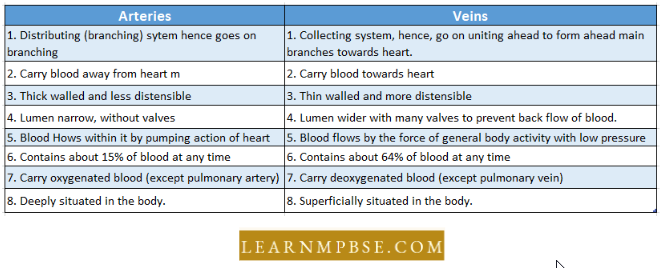
The lowest level of amino acids the hepatic vein.
- Veins. In veins, the muscular and elastic tissues are less developed while connective tissues are more developed.
- Venules. Ultimate fine branches of veins. Special type of blood vessels.
- Arteriovenous Anastomosis. Arterioles are connected with venules directly. These open at too low a temperature for retaining heat.
- They are found at the extremities like lips, pinna, tongue, fingertip, eyelids, nose etc., this helps in preventing heat loss.
- Blood sinuses are the blood spaces replacing capillaries in the liver, spleen bone marrow etc. with even thinner walls,
- Sinusoids. The arteries and veins are connected by way of irregular anastomosing vessels which are lined with discontinuous epithelium having phagocytic cells.
- Rete Mirabilia. Arteries or veins divide into vessels which are as small as capillaries and reunite to form arteries or veins For Example, Glomeruli in the kidney.
- Portal vein. A vein which collects blood from an organ and on its way to the heart divides into a network of capillaries in an intermediate organ.
- Vasa vasorum are the vessels within the walls of the main vessels.
Open And Closed Circulatory Systems NEET Biology
NEET Biology Blood Circulatory System Portal System
- A vein that carries blood from one capillary network to another is called a portal vein.
- Frog has both a renal portal system and a hepatic portal system.
- The renal portal system is absent in mammals, only the hepatic portal system is present.
- The hepatic portal vein receives blood from gastrointestinal organs and the spleen and delivers it to sinusoids of the liver.
- Hypophyseal portal system. Blood from the hypothalamus is collected by the hypophyseal portal vein which ends in the anterior pituitary.
NEET Biology Blood Circulatory System Blood Pressure
- The pressure exerted by the blood on the walls of blood vessels is called blood pressure (BP).
- Is the result of the sum of.
- Osmotic colloidal pressure of blood
- Elastic recoil of blood vessel’s wall and
- Pumping force of the heart.
- First measured by British physiologist Stephan Hales (1733) in the carotid artery of the mare.
- In humans, it was first measured by Vaivre (1856) using a Ludwig mercury manometer.
- Riva Rocci (1896) discovered a sphygmomanometer, the instrument to measure B.P.
- In adults, the normal BP is 120/80.
- 120 mm of Hg is systolic pressure during contraction of ventricles, and 80 mm of Hg is diastolic pressure during relaxation of ventricles.
- In children, the BP is low as compared to adults.
- In old age, the average BP is 150/90, as the arterial wall becomes less elastic.
The chemicals which are vasodilators decrease blood pressure while vasoconstrictors increase blood pressure. Histamine is a vasodilator and adrenaline is a vasoconstrictor.
NEET Biology Blood Circulatory System Pulse
- Pulse is a wave of distension, i.e., a rhythmic expansion and relaxation (not contraction) of arteries.
- PI use is felt at the radial artery of the wrist.
- With the help of a pulse, the heartbeat can be measured.
NEET Biology Blood Circulatory System Pulse Pressure
- It is the difference between systolic and diastolic pressure.
- In normal adults, the value of pulse pressure is 40 mm of Hg (120 mm- 80 mm).
NEET Biology Blood Circulatory System Heart Sound
During each cardiac cycle, the heart generates four sounds; however, only the first and second sounds are audible using a stethoscope. The following noises are delineated below: Closure of the Bicuspid and Tricuspid valves.
The method of listening to heart sounds is known as auscultation.
First Sound (Sj:
The phenomenon primarily results from the closure of the semilunar valves in the systemic and pulmonary aorta at the conclusion of ventricular systole, coinciding with the T wave on the ECG.
- It resembles LUBB.
- It has an extended duration.
- It is a lower frequency (low pitch).
- The volume is increased.
The second heart sound (S2):
2 nd sound (Sa) Occurs with the closure of the semilunar valves of the systemic and pulmonary aorta after ventricular systole, coinciding with the T wave of the ECG. This is attributable to:
- It appears to resemble DUP.
- It is brief.
- It possesses more sharpness (high frequency).
- It is less intense (low volume).
Open And Closed Circulatory Systems NEET Biology
NEET Biology Blood Circulatory System Stroke Volume (Stroke Output)
The volume of blood ejected out by heart per beat i.e. = 70 ml.
Cardiac Output (Heart Output). The amount of blood leaving the right or left ventricle per minute is known as cardiac output or minute volume. The major factor that directly influences the cardiac output is the amount of blood flowing into the ventricle during the diastole (diastolic intake).
- The volume of blood ejected per minute (heart rate x stroke volume i.e. 72 x 70 ml. = 5 litres); denoted as ml/100 gm of body weight/minute (man 5 – 10 ml; dog = 12-15 ml; cat = 65 – 70 ml). It increases by 20 to 30% at high altitudes.
- The entire blood of our body is circulated within just more than a minute and during exercise within less than 15 seconds. (In open-type circulation the velocity is very low i.e. in cockroaches it takes about 3-8 minutes for the entire blood to circulate)
- Cardiac output is not constant but varies with the physical activity.
- Vigorous exercise increases cardiac output to as much as 21L/min in a person in good condition.
- CO goes up to 35 L/min in world-class athletes.
- The difference between the maximum and resting cardiac output is called cardiac reserve.
- People with severe heart disease may have little or no cardiac reserve and little tolerance for physical exertion.
Of the blood pumped out (cardiac output) each minute by the heart, distribution to different parts are :
- 10% to heart muscles
- 15% to brain
- 25% to the digestive system
- 20% to kidneys
- 30% to other organs
NEET Biology Blood Circulatory System Cardiac Index
The cardiac output per square metre of body surface area. This is about 3 litres in a man of 70 kg body weight with a body surface area of 1.7 meters.
NEET Biology Blood Circulatory System Pulse Rate
Following the ventricular systole a wave of distension (arterial pulse) passes along the arteries which is normally felt by putting a finger over the radial artery in the wrist. This wave is counted as the number of pulses per minute.
NEET Biology Blood Circulatory System Cardiac Activity
Includes all 3 components: cardiac rate, cardiac output and the force of contraction.
NEET Biology Blood Circulatory System Starling’s Law Of Heart
In stretched muscle, the force of contraction increases. Thus, if a higher amount of blood enters the heart its force of contraction increases proportionately.
- Tachycardia, increased cardiac activity
- Bradycardia decreases cardiac activity
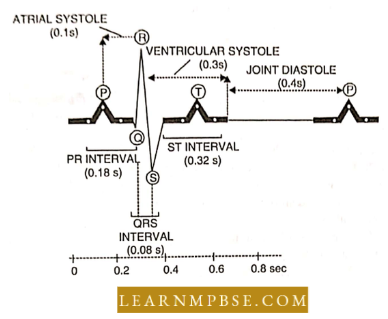
Impulse conduction generates tiny currents in the heart, that spread through surrounding tissue to the surface of the body. If electrodes are properly placed on the body surface at specific places, the electric potentials generated by the heart during the transmission of impulses from an SA node through a conducting system can be recorded.
Such a record is called Electrocardiogram and the device used is an electrocardiograph. A normal ECG is composed of a P wave, A QRS complex and a T-wave.
- Where P = depolarization of atrium indicates SA node activation wave
- P-wave occurs slightly before the onset of Atrial contraction (systole).
- QRS – waves (complex) begin slightly before the onset of ventricular systole.
- T-wave occurs slightly before the end of ventricular systole.
- PQ = Contraction of the auricle
- QRS = depolarization of the ventricle.
Components Of Blood In Animals NEET Study Material
Q wave and ascent of R wave indicate the spread of impulse of contraction from AV Node,
- Bundles of His, Purkinje fibres and ventricle muscles.
- R-S and S-T interval = contraction of the ventricle.
- T-Wave = Relaxation of ventricle.
- ECG aids in the diagnosis of any irregularity in the heartbeat.
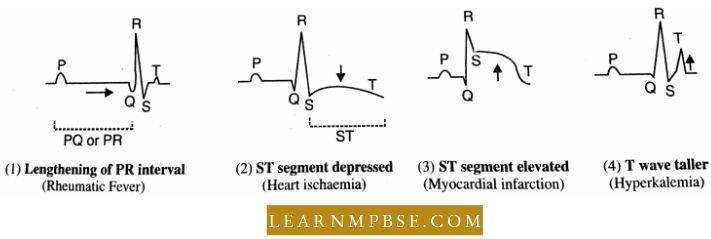
In rheumatic heart disease (valve damaged) and arteriosclerotic heart disease (due to the formation of plaque or calcification) there is inflammation of the atria and AV node, which results in the lengthening of the PR interval.
- When sore muscles receive insufficient oxygen (lesser supply of heart ischaemia), the SI segment is depressed and the l wave Is flattened.
- In acute myocardial infarction, the ST segment is elevated and Q & R waves are enlarged
In the case of hyperkalemia, the T wave is very tall and slender.
NEET Biology Blood Circulatory System Lymphatic System
The lymphatic system aids in maintaining optimal fluid equilibrium in tissues, conserving proteins, and eliminating bacteria and other particles from the tissues.
- The mammalian lymphatic system comprises lymphatic tubes and lymphoid organs.
- Lymph circulates unidirectionally from capillaries to progressively bigger lymphatic arteries, ultimately converging into a lymphatic duct that drains into a subclavian vein.
- Lymphoid nodules known as Peyer’s patches are located within the gut wall.
- Lymph is a transparent fluid contained within lymphatic tubes, originating from interstitial fluid.
- The lymphatic fluid in the arteries next to the gut postprandially is typically opaque due to the presence of chylomicrons.
- Lymph contains a lower concentration of antibodies compared to blood plasma.
Lymphocytes are produced in primary lymphoid tissue (thymus, embryonic liver, adult bone marrow) and migrate to secondary lymphoid tissue (spleen, lymph nodes, unencapsulated lymphoid regions of gut submucosa, respiratory and urinogenital regions).
- Lymphoma is a tumour composed of lymph tissue.
- Hodgkin’s disease is a malignant lymphoma of reticuloendothelial cells in lymph nodes and other lymphoid tissues.
- Even a minor interference in the removal of tissue fluid will be noticed as tissue swelling a condition called oedema.
Lymph vessels. The lymphatic system helps to defend the body against diseases.
NEET Biology Blood Circulatory System Disorders Related To The Circulatory System
The pressure exerted by the flow of blood on the walls of the arteries is tanned blood pressure.
- Arterial blood pressure. The pressure of blood in the arteries is called arterial blood pressure.
- Pulse pressure. The difference between systolic pressure and diastolic pressure is tanned pulse pressure.
- Hypotension (Low blood pressure). It is caused due to permanent vasodilation of arteries or failure of the pumping action of the heart.
- Hypertension (High blood pressure). It is caused by to rise in cholesterol levels, nervous strain, arteriosclerosis and kidney trouble.
- Thrombophilia. A disorder of the haemopoietic system in which there is a tendency for the occurrence of thrombosis.
- Thrombocytopenia. Fall in number of thrombocytes in blood.
- Polycythemia. Increase in the number of RBCs in blood.
- Leucopcnia. Abnormal fall in the number of WBCs in blood.
- Leukaemia. It is a cancer of the blood in which bone marrow and lymph nodes produce more lymphocytes,
- Diapedesis. Squeezing out of W.B.C. from blood capillaries.
- Acapnia. Decreased amount of CO, in the blood.
- Anaemia. It is a disorder resulting in either a decrease in R.B.C. or in the amount of haemoglobin. _
- Sickle cell anaemia. It is a congenital haemolytic disease in which R.B.C. destruction occurs due to intracellular defects.
- Pernicious anaemia. Macrocytic (large sized) R.B.C. with less 02 carrying capacity. It is due to an extracellular defect.
- Haemoglobinomia is the disorder due to abnormal destruction of R.B.C. in the fluid and setting free Hb.
- A marked decrease in concentration of plasma proteins is termed hypoproteinemia. Tachycardia. The heart beats rapidly.
- Bradycardia. The heart beats slowly.
- Dextrocardia. If the heart is placed towards the right side in the thoracic cavity an inborn defect.
- Ectopia cordis. Sometimes heart becomes located outside in the thoracic cavity. The enlargement of the heart is termed cardiomegaly.
- Cardiac arrest is a complete stoppage of a heartbeat.
- Arteriosclerosis. It is also called the hardening of arteries, which results in arteries losing their elasticity because of the deposition of calcium salts in walls.
- Heart block. The cardiac condition resulting from the defective transmission of impulses from the atrium to the ventricle is termed a heart block.
- Heart murmur. The abnormal heart sound is produced as a result of defective valves. (Murmuring heart)
- Patent Ductus Arteriosus. A congenital heart defect in which ductus arteriosus remains open. It must be closed by a surgical operation.
- Angina. Heart pain of short duration is usually located in the front of the chest. Ischaemia (pronounced is-keema)—Inadequate flow of blood to a part of the heart caused by obstruction to its blood supply.
- Myocardial infarction. Death of a part of the heart muscle following cessation of blood supply to it is an acute heart attack.
- Haemolysis. It is the destruction of the blood corpuscles, causing the release of contained haemoglobin into the plasma.
- Haemotoma. Blood is collected in the tissues outside the blood vessels, a common skin bruise due to blow.
- Haemorrhage.Loss of blood from injured blood vessels.
- Haemorrhoids. These are varicose veins in the walls of the rectum.
- Oedema (Kdema). A Kval swelling is due to the accumulation of serous fluid in tissue caused by the defective circulation of blood or lymph.
- In arborisation heaitbhvk. the defect lies in the Purkinjc’s fibres.
- Angina Pectoris. Sevciv but temporary heart pain which is usually felt in the front of the chest and may pass into the arms.
- Myocardial Ischaemia. Deficient blood supply to the heart muscle causes angina pectoris (G. Shein — to check, hame – blood)
NEET Biology Blood Circulatory System Blood Groups
The problem arises in the case of a condition when Rh- mother bears an Rh+ foetus. The second time if this happens it proves fatal to the foetus.
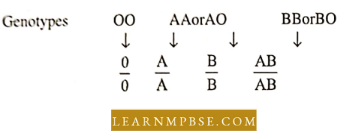
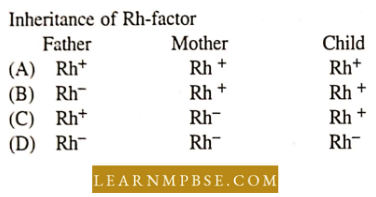
- This condition is called Erythroblastosis foetalis; when maternal antibodies diffuse across the placenta into the foetal blood causing agglutination of red blood corpuscles, blockage of the capillaries and haemolysis leading to anaemia.
- If one parent belongs to group A and the other to group B, the possible blood groups of children will be AB, A, 0. and B,0.
- If a woman with blood group 0 marries a man with blood group AB, the blood group of their child will be either A or B
- Persons with Blood group 0 are known as universal donors because their blood has no antigen in RBCs. They can donate blood to all the groups but can receive blood only from their own group.
- Individuals with Blood group AB are called universal recipients because their blood has no antibodies in plasma. They can receive blood from any group but can donate blood to their own group.
- DPF – Di isopropyl fluorophosphate. It is used in the estimation of the life span of blood platelets
Components Of Blood In Animals NEET Study Material
Clumping of RBC may take place when the blood of one person is mixed with the blood of another person if their Blood groups are not compatible due to antigen-antibody reaction. Blood group antigens occur in Red blood corpuscles while antibodies occur in plasma.
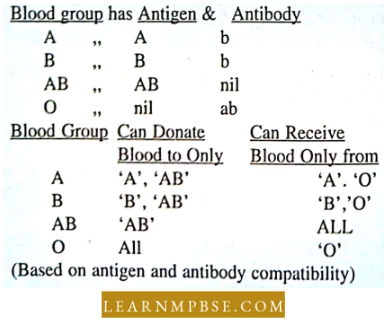
NEET Biology Blood Circulatory System Useful Information
Welker’s method IN employed for measuring a total amount of blood, plasma or RBC.
- 1 % of R R C. daily is destroyed in our body.
- Damaged or defective S A node can be corrected by implanting an artificial pacemaker.
- This instrument stimulates the heart artificially at regular intervals.
- Vasodilator. A drug that opens up the narrow blood vessels.
- Sphygmomanometer. An instrument used to measure blood pressure.
- Cardioscope. An instrument fitted with a lens and light for examining the inside of the heart.
- Angiography. X-ray of the blood vessels after injection of radio-opaque substance.
- Coronary Angiography. When the contrast medium dye is injected into coronary arteries (arteries of the heart) and pictures are taken, it is known as coronary angiography.
- Clearing a blockage in the coronary artery by balloon surgery is called coronary angioplasty.
- Angiogram. Film showing the arterial system after injecting radio-opaque material.
- Haemodialysis. Removal of waste products from the blood kidney.
- Arteriosclerosis different from atherosclerosis
Atherosclerosis. In this disease, a lumpy thickness develops on the inner walls of the arteries that prevents die dilation of vessels (arteries). The vessels become smaller in diameter and cannot fully expand.
- In such cases, the platelet-derived growth factor (PDGF) is released which provides a rough surface to platelets. If such plaques are formed in a coronary artery, it may cause blockage of blood to the heart and result in heart attack or stroke.
- However, in the case of arteriosclerosis, there is hardening and loss of elasticity of arteries. Sclerosis of the artery may cause pain in the chest, co RBC: WBC = 600: 1
The largest vein in the human body is the inferior vena cava, and the Largest Artery is the aorta.
- Smallest blood vessel in the body — blood capillary, co The giraffe’s blood pressure may be the highest.
- In human males, normally haemoglobin is 15.8 g/100 ml blood, and in human females 13.7 g/100 ml.
- Infants, at birth, have 23 g/100 ml. co ] gm. of haemoglobin when fully saturated combined with 1.34 ml oxygen.
- In Earthworm haemoglobin is dissolved in blood plasma and is not contained in blood cells, co Among all animals, the metabolic rate is the slowest in elephants.
Due to defective valves, blood keeps on leaking and the sound of a murmur is produced.
- Sympathetic nerves increase the rate of heartbeat. cO In fishes only deoxygenated blood flows through the heart,
- The sinoauricular node is composed of special muscle fibres, The spleen also controls some volume of blood, but blood volume is mainly controlled by veins, co In walls of ventricles, papillary muscles are present, and co Hepatic portal system is found in all chordates.
- At birth, the number of WBCs is more than the RBCs. co Frog has two pairs of lymph hearts, co Urea Transport. The blood in the hepatic vein contains the maximum amount of urea and the renal vein has the minimum amount.
- Several RBCs increase if one lives at a higher altitude because there is less oxygen on mountains, co Fish Without Haemoglobin.
- The Antarctic ice fish, Chaemocephalus, has transparent blood with little iron and no red corpuscles. Oxygen seems to be carried only by physical solution in the plasma,
Components Of Blood In Animals NEET Study Material
- Blue Baby. A baby with a blue tinge to the skin due to insufficient oxygenation of the blood. It indicates a congenital heart or lung defect.
- Insufficiency of Blood. The body does not contain enough blood to fully vascularise all the tissues. After a heavy meal, more blood flows to the gut and less to the brain. This makes one feel sleepy.
- Slowest Blood Flow. Blood flow is slowest in the capillaries to allow enough time for the exchange of materials.
- Ringer Solution. A solution containing chlorides of sodium. potassium and calcium that maintain the beating of an isolated frog’s heart is called Ringer’s solution.
- Maturation of RBCs. It requires vitamin Bp and folic acid. Deficiency of these vitamins causes anaemia.
- Spindle Cells. These occur in amphibian blood and help in blood clotting like the mammalian platelets, cs* With the removal of the spleen, the leucocyte count rises, cs* Excess calcium ions cause increased heartbeat.
- The heart is wrapped around the rectum of a freshwater mussel. It means the rectum of freshwater mussel passes through the heart.
- Keber’s organs’ pericardial glands discharge excretory products into the pericardial cavity in the freshwater mussel.
- Crocodilian Heart. Among reptiles, crocodilians are exceptional in having a 4-chambered heart.
Invertebrate Hearts. Earthworm has 4 pairs of hearts. Cockroach has a 13-chambered, tubular heart, about as long as the body. In freshwater mussel, the rectum passes through the ventricle of the heart.
- Anophilin is the anticoagulant produced by blood.
- Daily about 30% of WBCs are destroyed.
- Heart Transplant. The world’s first human heart transplant was performed by Prof. Christian Bernard on December 21, 1967, in Cape Town, South Africa.
- India’s first human heart transplant was done by cardio surgeon P. Venugopal on August 3, 1994, at the All Indian Institute of Medical Sciences (AIIMS), Delhi.
NEET Biology Blood Circulatory System Questions from Competitive Examinations
Question 1. The pulmonary artery differs pulmonary vein in having :
- No endothelium
- Valves
- Large lumen
- Thick muscular walls.
Answer: 4. Thick muscular walls
Question 2. Match the names of the parts listed under column 1 with the names of the organs listed under column 2; Choose the answer which gives the correct combination of the alphabet:

- A — s, B — r, C — p, D — t
- A — r, B — t, C — s, D — p
- A — r, B — s, C — t, D — p
- A — S, B — q, C — p, D — t.
Answer: 3. A — r, B — s, C — t, D — p
Question 3. The blood protein involved in blood coagulation is :
- Fibrin
- Thrombin
- Prothrombin
- Fibrinogen.
Answer: 4. Fibrinogen
Question 4. Blood vessel which brings oxygenated blood to the left atrium are:
- Precaval vein
- Postcaval vein
- Pulmonary vein
- Pulmonary artery.
Answer: 3. Pulmonary vein
Structure And Function Of The Heart NEET Exam Preparation
Question 5. A sample of blood shows clumping with antiserum A but not with antiserum B. The blood group would be :
- O
- A
- B
- AB.
Answer: 2. A
Question 6. A person with the AB blood group can receive blood from :
- AB only
- O only
- Both A and B
- All the above.
Answer: 4. All the above.
Question 7. Blood group B means the person :
- Can form antibody for B
- Cannot form antibody for B
- Can receive the blood of AB group
- Cannot receive blood group O.
Answer: 2. Cannot form antibody for B
Question 8. Which one carries oxygen?
- Plasma
- Lymph
- Blood
- Serum.
Answer: 3. Blood
Question 9. Collecting of WBCs at the site of injury occurs due to:
- Phagocytosis
- Hemolysis
- Diapedesis
- All the above.
Answer: 3. Diapedesis
Question 10. In Prawn, the heart pumps :
- Deoxygenated blood
- Oxygenated blood
- Both (1) and (2)
- Mixed blood.
Answer: 2. Oxygenated blood
Question 11. Blood circulation is open in :
- human
- cow
- apes
- cockroach.
Answer: 4. cockroach
Question 12. Heart sound which is longer is :
- lubb
- dup
- both equal
- sometimes (1) and sometimes (2).
Answer: 1. lubb
Question 13. Adrenaline directly affects:
- S. A. node
- P – cells of Langerhans
- Dorsal root of the spinal cord
- Epithelial cells of the stomach.
Answer: 1. S. A. node
Question 14. Continuous bleeding from an injured part of the body is due to a deficiency of :
- Vitamin A
- Vitamin B
- Vitamin K
- Vitamin E.
Answer: 3. Vitamin K
Question 15. Impulse of heartbeat originates from :
- S. A. node
- A. V. node
- Vagus nerve
- Cardiac nerve.
Answer: 1. S. A. node
Question 16. Organs which get only oxygenated blood are:
- lungs
- gills
- liver
- spleen.
Answer: 4. spleen.
Question 17. Bundle of His is a network of:
- nerve fibres found throughout the heart
- muscle fibres distributed throughout the heart walls
- left auricle and left ventricle in higher vertebrates
- nerve fibres distributed in ventricles.
Answer: 3. left auricle and left ventricle in higher vertebrates
Structure And Function Of The Heart NEET Exam Preparation
Question 18. Systemic heart refers to :
- the two ventricles together in humans
- the heart that contracts under stimulation from the nervous system
- left auricle and left ventricle in higher vertebrates
- entire heart in lower vertebrates.
Answer: 3. left auricle and left ventricle in higher vertebrates
Question 19. The diagram below shows how things get to and from the liver. They are labelled as A, B, C, D, E and F. Which one of the following labellings is the correct one?
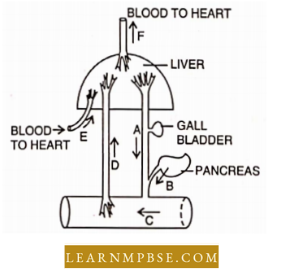
- A is the hepatic portal vein and E is the hepatic vein
- C is the intestine and F is the hepatic portal vein
- D is the hepatic portal vein and F is the hepatic vein
- B is the pancreatic artery and E is the hepatic artery
- D is the hepatic portal vein and E is the hepatic vein.
Answer: 3. D is the hepatic portal vein and F is the hepatic vein
Question 20. Choose the correct proportion with respect to the distribution of blood in the body of man :
- 5% to heart muscles, 15% to brain, 25% to liver, 25% to kidney, 15% to bones, 15% to other organs.
- 20% to heart muscles, 10% to brain,10% to liver, 25% to kidney, 10% to bones, 25% to other organs.
- 10% to heart muscles, 10% to brain, 10% to liver, 40% to kidney, 15% to bones, 15% to other organs
- 10% to heart muscles, 20% to brain, 20% to liver, 15% to kidney, 5% to bones, 35% to other organs
- 15% to heart muscles, 20% to brain, 30% to liver, 40% to kidney, 5% to bones, 4% to other organs.
Answer: 3. 10% to heart muscles, 10% to brain, 10% to liver, 40% to kidney, 15% to bones, 15% to other organs
Question 21. The rate of the heartbeats and their conduction is represented in the pathway :
- AVN-bundle of His network of Purkinje fibres
- Network of Purkinje fibres – AVN – SAN-bundle of His
- AVN – SAN – a bundle of this – Purkinje fibres
- SAN – AVN – the bundle of this ^Purkinje fibres
- SAN – AVN Purkinje fibres – a bundle of His.
Answer: 1. AVN-bundle of this network of Purkinje fibre
Question 22. Of the following the one which is an example of a buffer system in blood is :
- haemoglobin and oxyhaemoglobin
- oxygen and carbon dioxide
- albumin and globulin
- sodium bicarbonate and carbonic acid
- oxygen and carbon monoxide.
Answer: 4. sodium bicarbonate and carbonic acid
Question 23. The chamber of the human heart, which has the thickest wall:
- right atrium
- left atrium
- right ventricle
- left ventricle.
- None of these.
Answer: 3. right ventricle
Question 24. A person with blood group A has :
- Antigen A and antibody b
- Antigen B and antibody a
- Both antibodies
- No antibody and no antigen.
Answer: 1. Antigen A and antibody b
Question 25. The part of the antibody molecule which acts as a binding site for specific related antigens is :
- Complete light chain
- Complete heavy chain
- Complete light and heavy chain
- Variable parts of light and heavy chains.
Answer: 4. Variable parts of light and heavy chains
Question 26. The treatment of snake bite by antivenin is an example of :
- Artificially acquired active immunity
- Artificially acquired passive immunity
- Naturally acquired passive immunity
- Specific natural immunity.
Answer: 2. Artificially acquired passive immunity
Question 27. The percentage similarity in (3-chain of Hb in man and rhesus monkey is :
- 2%
- 4%
- 8%
- 40%.
Answer: 4. 40%.
Question 28. Serum is :
- blood without fibrinogen
- lymph without corpuscles
- blood without corpuscles and fibrinogen
- lymph.
Answer: 3. blood without corpuscles and fibrinogen
Question 29. The bundle of this is a group of :
- nerve fibres
- muscle fibres
- connective tissue
- ganglia.
Answer: 2. muscle fibres
Question 30. In which one of the following pair of terms both represent one and the same thing?
- Mitral valve-bicuspid valve
- Atrioventricular node—pacemaker
- Leucocytes-lymphocytes
- Plasma-serum.
Answer: 1. Mitral valve-bicuspid valve
Structure And Function Of The Heart NEET Exam Preparation
Question 31. The four-chambered heart is present in :
- frog
- crocodile
- shark
- lizard.
Answer: 2. crocodile
Question 32. The nucleus of a monocyte is :
- two-lobed
- kidney shaped
- s-shaped
- multi-lobed.
Answer: 2. kidney shaped
Question 33. You are required to draw blood from a patient and to keep it in a test tube for analysis of blood corpuscles and plasma. You are also provided with the following four types of test tubes. Which of these will you not use for the purpose?
- test tube containing calcium bicarbonate
- chilled test tube
- test tube containing heparin
- test tube containing sodium oxalate.
Answer: 3. test tube containing heparin
Question 34. Insulin and glucagon are transported to the target organ by :
- lymph
- blood
- pancreatic duct
- cystic duct.
Answer: 2. blood
Question 35. Which of the following is the correct pair?
- Leucocytes—Lymphocytes
- Haemophilia—Blood cancer
- SA Node—Pacemaker
- Malleus—Anvil.
Answer: 3. SA Node—Pacemaker
Question 36. An artificial pacemaker is implanted subcutaneously and connected to the heart in patients :
- having 90% blockage of the three main coronary arteries
- having a very high blood pressure
- with irregularity in the heart rhythm
- suffering from arteriosclerosis.
Answer: 3. with irregularity in the heart rhythm
Question 37. G—6-P dehydrogenase deficiency is associated with haemolysis of :
- Lymphocytes
- RBCs
- Platelets
- Leucocytes.
Answer: 2. RBCs
Blood Vessels Types And Functions NEET Biology
Question 38. Which of the following substances, if introduced into the bloodstream, would cause coagulation of blood at the site of its introduction?
- Fibrinogen
- Prothrombin
- Heparin
- Thromboplastin.
Answer: 4. Thromboplastin.
Question 39. Different factors play important roles in the coagulation of blood, some of the factors are listed in list-I and their nomenclatures are given in list-II. Find out the accurate matching
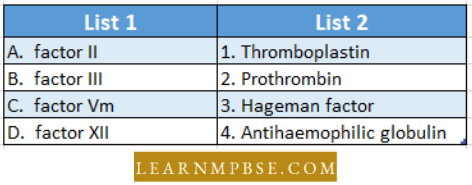
- A: 2, B: 1, C: 4, D:3
- A: 1, B: 2, C : 3, D: 4
- A : 3, B: 4, C: 2, D: 1
- A: 4, B: 4, C: 2, D: 1
Answer: 1. A: 2, B: 1, C: 4, D:3
Question 40. Which of the following statements is wrong?
A. Leucocytes disintegrate in the spleen and liver.
B. RBC, WBC and blood platelets are produced by bone marrow.
C. Neutrophils bring about the destruction and detoxification of toxins of protein origin.
D. The important function of lymphocytes is to produce antibodies.
- (A) and (C) only
- (A) and (D) only
- (A) and (C) only
- (B) and (C) only
- (B) and (D) only.
Answer: 3. (A) and (C) only
Question 41. What happens when the pacemaker is non-functional?
- Only the auricles will contract rhythmically.
- The cardiac muscle does not contract in a coordinated manner rhythmically.
- Only ventricles will contract rhythmically.
- Cardiac muscle will contract in a coordinated manner rhythmically.
- Auricles and ventricles contract simultaneously.
Answer: 2. The cardiac muscle does not contract in a coordinated manner rhythmically.
Question 42. In sickle cell anaemia glutamic acid is replaced by
- proline
- alanine
- serine
- valine.
Answer: 4. valine.
Question 43. The process of formation of blood corpuscles is called.
- Haempoeisis
- Haemolysis
- Haemozoin
- None of these.
Answer: 1. Haempoeisis
Question 44. Leech secretes which of the following anticoagulants?
- Heparin
- Hirudin
- Serotonin
- Histamine.
Answer: 2. Hirudin
Question 45. Mark the odd one :
- Monocyte
- Lymphocyte
- Neutrophil
- Erythrocyte.
Answer: 4. Erythrocyte.
Question 46. Find out the incorrect answer from the following?
- veins are typically larger in diameter than arteries
- because of their small size, capillaries contain blood that is moving more quickly than in other parts of the circulatory system
- the walls of arteries are elastic, enabling them to stretch and shrink during changes in blood pressure
- veins contain more blood than any other part of the circulatory system.
Answer: 2. because of their small size, capillaries contain blood that is moving more quickly than in other parts of the circulatory system
Question 47. How many times a red blood corpuscle will have to pass through the heart in its journey from the hepatic artery
- Two times
- Only once
- Several times
- Many times
Answer: 1. Two times
Question 48. ‘Heart to Heart ‘ is
- SA node
- AV node
- Long bones
- All of these
Answer: 1. SA node
Question 49. SA-node is located in :
- Lower lateral wall of the right atrium
- Upper lateral wall of the right atrium
- Upper lateral wall of the left atrium
- Lower lateral wall of left atrium
Answer: 2. Upper lateral wall of the right atrium
Question 50. Yellow bone marrow is found especially in the medullary cavity of:
- Short bones
- Spongy bones
- Long bones
- All of these.
Answer: 3. Long bones
Question 51. An insect bite may result in inflammation of that spot. This is triggered by the alarm chemicals such as :
- Histamine and dopamine
- Histamine and Kinins
- Interferons and osponins
- Interferons and histamine.
Answer: 2. Histamine and Kinins
Blood Vessels Types And Functions NEET Biology
Question 52. Which one of the following four secretions is matched with its source, target and nature of action?

Answer: 4.
Question 53. Closure of which of the following makes the louder sound of a heartbeat?
- mitral valve
- semilunar valve
- auriculo-ventricular valve
- tricuspid valve.
Answer: 3. auriculo-ventricular valve
Question 54. The diagram given here is the standard ECG of a normal person, The P-wave represents the following:
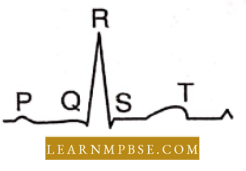
- Initiation of the ventricular contraction
- Beginning of the system
- End of systole
- Contraction of both the atria.
Answer: 4. Contraction of both the atria.
Question 55. In ECG, what does wave represent?
- Diastole of auricles
- Diastole of ventricles
- Systole of ventricles
- Diastole of auricles and ventricles.
Answer: 4. Diastole of auricles and ventricles
Question 56. Which leucocytes release heparin and histamines in the blood?
- Eosinophil
- Basophil
- Neutrophil
- Lymphocytes
- Monocytes.
Answer: 2. Basophil
Question 57. Graveyard of blood is :
- spleen
- liver
- kidney
- thymus.
Answer: 1. spleen
Question 58. The given figure shows an angiogram of the coronary blood vessel. Which one of the following statements correctly describes, what is being done?
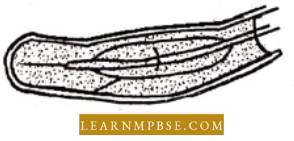
- It is the coronary artery which has a cancerous growth that is being removed
- It is the coronary artery which is blocked by a plaque and the same is being cracked
- It is a coronary vein in which the defective valves are opened
- It is a coronary vein blocked by a parasite (blood fluke) that is being removed.
Answer: 2. It is the coronary artery which is blocked by a plaque and the same is being cracked
Question 59. A drop of each of the following is placed separately on four slides. Which of them will not coagulate?
- Blood serum
- Sample from the thoracic duct of the lymphatic system
- Whole blood from pulmonary vein
- Blood plasma.
Answer: 4. Blood plasma.
Question 60. The valve situated between the left atrium and left ventricle is called :
- mitral valve
- bicuspid value
- tricuspid valve
- Eustachian valve.
Answer: 1. mitral valve
Blood Vessels Types And Functions NEET Biology
Question 61. The open circulatory system is present in
A. arthropods
B. annelids
C. chordates
D. molluscs
- C only
- C and B
- A and B
- D only
- A only
Answer: 5. A only
Question 62. In humans, blood passes from the postcard to the diastolic right atrium of the heart due to :
- the pressure difference between the portocaval and atrium
- stimulation of the sino-auricular node
- pushing open the venous valves
- suction pull.
Answer: 1. pressure difference between the portocaval and atrium
Question 63. Which one of the following statements is correct regarding blood pressure :
- 130/90 mmHg is considered high and requires treatment
- 100/55 mmHg is considered an ideal blood pressure
- 105/50 mmHg makes one very active
- 190/110 mmHg may harm vital organs like the brain and kidneys.
Answer: 4. 190/110 mmHg may harm vital organs like the brain and kidney.
Question 64. Arteries are best defined as the vessels which :
- Supply oxygenated blood to the different organs
- Carry blood away from the heart to different organs
- Break up into capillaries which reunite to form a vein
- Carry blood from one visceral organ to another visceral organ.
Answer: 2. Carry blood away from the heart to different organs
Question 65. ‘Bundle of His’ is a part of which one of the following organs in humans?
- Brain
- Heart
- Kidney
- Pancreas.
Answer: 2. Heart
Question 66. Which one of the following plasma proteins is involved in the coagulation of blood?
- An albumin
- Serum amylase
- A globulin
- Fibrinogen.
Answer: 4. Fibrinogen.
Question 67. The vem which is formed from the capillaries of an organ and terminates into capillaries in some intermediate organ before entering the heart is called :
- Pulmonary vein
- Coronary vein
- Portal vein
- Systemic vein
Answer: 3. Portal vein
Question 68. In a normal human, the cardiac output (stroke volume) is :
- 47 ml
- 20 ml
- 5 litres
- 3.3 litre.
Answer: 3. 5 litres
Question 69. Which one of the following is incorrect for ‘atherosclerosis’?
- Constriction of the arterial lumen reduces blood flow.
- Loss of dilation ability of the arterial wall and its rupture.
- Cholesterol deposition at the inner wall of the artery.
- Proliferation of the vascular muscles.
Answer: 2. Loss of dilation ability of the arterial wall and its rupture.
